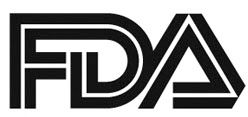Pembrolizumab Plus Chemotherapy Received Full FDA Approval for NSCLC
Pembrolizumab has been granted a full approval by the FDA in combination with standard chemotherapy for patients with metastatic nonsquamous non–small cell lung cancer. The approval is based on results from the phase III KEYNOTE-189 trial.

Pembrolizumab (Keytruda) has been granted a full approval by the FDA in combination with standard chemotherapy for patients with metastatic nonsquamous nonsmall cell lung cancer (NSCLC). The approval is based on results from the phase III KEYNOTE-189 trial.
Risk of death was reduced by 51% with the addition of pembrolizumab to pemetrexed (Alimta) and either cisplatin or carboplatin in the frontline setting in patients with NSCLC withoutEGFRorALKmutations.1,2The pembrolizumab cohort did not reach median overall survival (OS), compared to 11.3 months OS (95% CI, 8.7-15.1) in the chemotherapy-alone arm. At a median follow-up of 10.5 months, the estimated 12-month OS rate was 69.2% (95% CI, 64.1-73.8) in the pembrolizumab arm compared with 49.4% (95% CI, 42.1-56.2) in the control group (HR, 0.49; 95% CI, 0.38-0.64; P<.001).
The coprimary endpoint of progression-free survival (PFS) was also met in this study, with a median PFS of 8.8 months (95% CI, 7.6-9.2) in the pembrolizumab group versus 4.9 months (95% CI, 4.7-5.5) in the control arm (HR, 0.52; 95% CI, 0.43 to 0.64;P<.001).
The approval was granted approximately 2 months ahead of expectations, under a new FDA approval pathway for supplemental applications.
"Today’s approval represents fulfillment of a postmarketing commitment demonstrating the clinical benefit of this product," the agency noted in a statement. "This is the second FDA approval using the Real Time Oncology Review pilot program that enabled the FDA review team to begin analyzing data before the application submission."
The prior accelerated approval for pembrolizumab in this setting was based on cohort G in the KEYNOTE-021 trial, in which the 12-month PFS rate was 56% with pembrolizumab combined with pemetrexed and carboplatin compared with 34% with chemotherapy alone (HR, 0.50; 95% CI, 0.29-0.84;P= .0038).3
The double-blind phase III KEYNOTE-189 study accrued 616 patients with advanced or metastatic nonsquamous NSCLC, regardless of PD-L1 expression. Patients were notEGFR- orALK-positive, and had not received systemic therapy for advanced disease. The trial randomization was 2:1 in favor of the pembrolizumab arm.
In the experimental arm (n = 410), patients received pembrolizumab at a 200-mg fixed dose every 3 weeks plus 500 mg/m2of pemetrexed plus either 75 mg/m2of cisplatin or carboplatin (AUC 5) on day 1 every 3 weeks for 4 cycles, followed by 200 mg of pembrolizumab plus 500 mg/m2of pemetrexed every 3 weeks. The regimen administered to the control group (n = 206) was identical, except that pembrolizumab was replaced with placebo.
Patient characteristics were well balanced between the 2 arms. The median age was 65.0 years in the pembrolizumab arm (range, 34.0-84.0), 62.0% of the patients were male, and all but 1 of the patients had an ECOG performance status of 0 or 1. Current/former smokers comprised 88.3% of the cohort and 96.1% of patients had adenocarcinoma.
The pembrolizumab OS benefit was observed across PD-L1 subgroups, including the <1% expression group (12-month OS rate, 61.7% vs. 52.2%; HR, 0.59; 95% CI, 0.38-0.92); the 1% to 49% cohort (12-month OS rate, 71.5% vs. 50.9%; HR, 0.55; 95% CI, 0.34-0.90), and those with a score of 50% or greater (12-month OS rate, 73.0% vs. 48.1%; HR, 0.42; 95% CI, 0.26-0.68).
The objective response rate per blinded, independent central radiologic review was 47.6% (95% CI, 42.6-52.5) in the pembrolizumab arm and 18.9% (95% CI, 13.8-25.0) with chemotherapy alone (P<.001). The disease control rate was 84.6% versus 70.4%, and the median duration of response was 11.2 months versus 7.8 months in the pembrolizumab versus control arms, respectively.
The rate of discontinuation of all study drugs due to adverse events (AEs) was 13.8% in the pembrolizumab arm compared with 7.9% in the control arm. The discontinuation rate of pembrolizumab was 20.2% and placebo was 10.4%. Death related to AEs occurred in 6.7% versus 5.9% of the pembrolizumab versus control arms, respectively.
Diarrhea (30.9% vs 21.3%) and rash (20.2% vs 11.4%) were the only 2 AEs occurring in ≥10% of patients that occurred more commonly in the pembrolizumab versus the chemotherapy-alone arm. Grade ≥3 AEs occurring in at least 10% of patients in either arm were anemia (16.3% with pembrolizumab vs 15.3% in the control group) and neutropenia (15.8% vs 11.9%, respectively).
The rate of acute kidney injury was 5.2% in the pembrolizumab arm versus 0.5% in the chemotherapy-alone arm. Eight patients (2.0%) receiving the PD-1 inhibitor had grade ≥3 acute kidney injury.
Immune-mediated AEs occurred in 22.7% of the pembrolizumab group versus 11.9% of the control group, including grade ≥3 AEs in 8.9% versus 4.5%, respectively. Pneumonitis led to 3 deaths in the pembrolizumab cohort.
References:
- Gandhi L, Rodgríguez-Abreu D, Gadgeel S, et al. KEYNOTE-189: Randomized, double-blind, phase 3 study of pembrolizumab (pembro) or placebo plus pemetrexed (pem) and platinum as first-line therapy for metastatic NSCLC. Presented at 2018 AACR Annual Meeting; April 14-18, 2018; Chicago, Illinois. Abstract CT075.
- Gandhi L, Rodgríguez-Abreu D, Gadgeel S, et al. Pembrolizumab plus chemotherapy in metastatic nonsmall-cell lung cancer [published online April 16, 2018].N Engl J Med.doi: 10.1056/NEJMoa1801005.
- Papadimitrakopoulou V, Gadgeel SM, Borghaei H, et al. First-line carboplatin and pemetrexed (CP) with or without pembrolizumab (pembro) for advanced nonsquamous NSCLC: Updated results of KEYNOTE-021 cohort G.J Clin Oncol.2017;35 (suppl; abstr 9094).